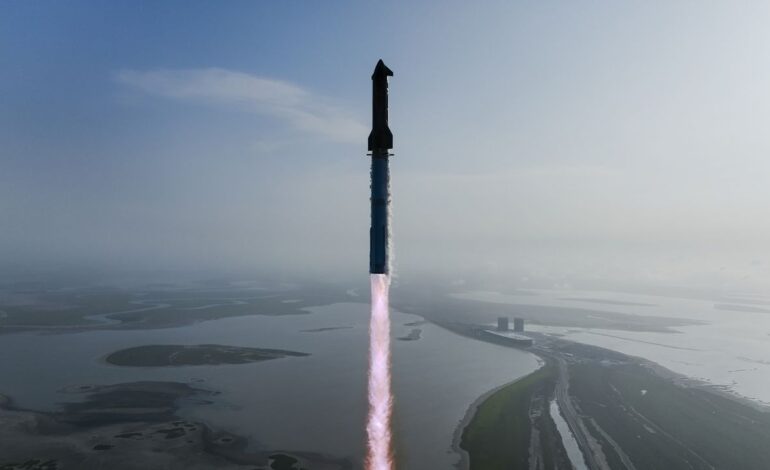SpaceX Targets August 24 for Starship Flight 10 Launch

SpaceX plans to conduct the 10th integrated test flight of its Super Heavy Starship launch vehicle on August 24, 2025. The launch is scheduled to take place from the company’s Starbase facility in Texas, with liftoff expected during a launch window that opens at 19:30 EDT (23:30 GMT). This announcement was made on August 15, aligning with a previous estimate by SpaceX CEO Elon Musk, who had indicated a launch timeframe of “about three weeks” in mid-July.
This upcoming flight marks a pivotal moment in the development of the Starship program. Starship’s previous three launches in 2025 have ended in the loss of the upper stage, putting pressure on the timeline to prepare the vehicle for its role as the lunar lander for NASA’s Artemis 3 mission, scheduled for the moon in 2027. The fully stacked launch vehicle, comprising the Super Heavy booster and Starship upper stage, stands approximately 394 feet (120 meters) tall.
Flight Details and Objectives
Flight 10 will utilize Booster 16 and Ship 37, both Block 2 variants of the evolving launch vehicle. This mission follows Flight 9, which took place on May 27, 2025, and concluded with the upper stage breaking apart in space approximately 45 minutes after launch. Less than a month later, a static test fire on June 18 resulted in an explosion that destroyed Ship 36, originally intended for Flight 10, and damaged SpaceX test infrastructure.
With the investigations into these mishaps now complete, the upcoming flight is set to embark on a new set of mission objectives. After stage separation, Starship will deploy eight Starlink satellite mass simulators, perform an in-space relight of its Raptor engines, and attempt a controlled splashdown in the Indian Ocean. Simultaneously, Booster 16 will adjust its trajectory for a controlled splashdown in the Gulf of Mexico.
The Road Ahead for Starship
To date, SpaceX has conducted nine Starship test flights, with several achieving partial success. Notably, the company successfully caught a Super Heavy booster using the launch tower’s “Mechazilla” chopstick arms, refurbishing it for reuse. Despite these advancements, none of the flights have met all mission objectives from launch to landing.
SpaceX’s development of Starship is a crucial part of Musk’s vision to establish human life on multiple planets, including planned missions to Mars. Additionally, Starship plays a central role in NASA’s Artemis program, aimed at returning astronauts to the moon for extended missions. As the countdown to August 24 continues, the aerospace community watches closely, hoping for a successful launch that will propel the ambitious Starship program forward.






